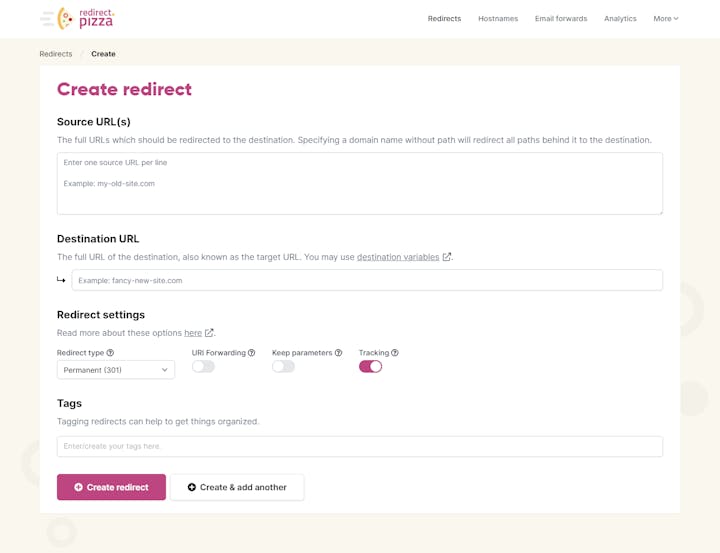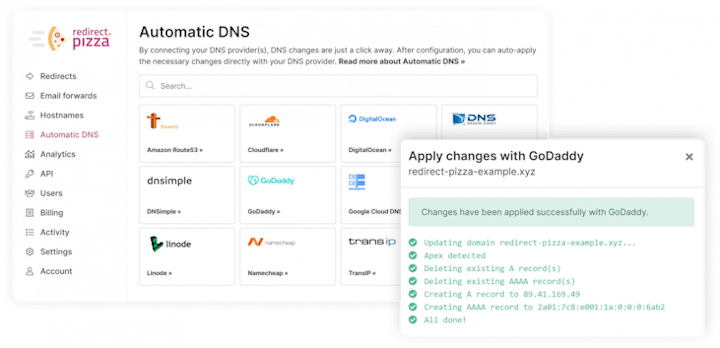This is why redirect.pizza is a useful domain migration tool
Setting up redirects is a crucial and essential task when migrating domains. After all, it’s really important that all your traffic is redirected to the appropriate destination. Otherwise, your visitors will get lost and frustrated, and you’ll suffer major traffic loss. But setting up redirects without any help can be a real hassle.
Fortunately, you’re not on your own. We can make your life a lot easier. With the help of redirect.pizza, you can be sure that all your redirects are maintained and always working correctly! redirect.pizza ensures that all traffic lands on an appropriate destination.

With our tool, multiple destination variables can be used in a single destination URL. And with our feature for regex matching, you can create infinitely complex redirect rules, and import complete paths from your old domain to your new one.
redirect.pizza comes with an automated HTTPS service. To ensure your website is always secure, we automatically install an SSL certificate on your domain. And we’ll make sure it is always up to date. You’ll never have to worry about the security of your website again!
Another thing that will be taken care of by redirect.pizza, is the management of your DNS. Especially if you have many domains, this can be a time-consuming task. But with the help of redirect.pizza, you can update your DNS records in bulk - from multiple domains and domain providers.

With our high-performance edge network, we provide the fastest redirects possible. The edge network minimizes the latency between user requests and redirections, ensuring faster and more responsive redirects.
So be quick to check out our plans (there’s even a free option!), and sign up today!




